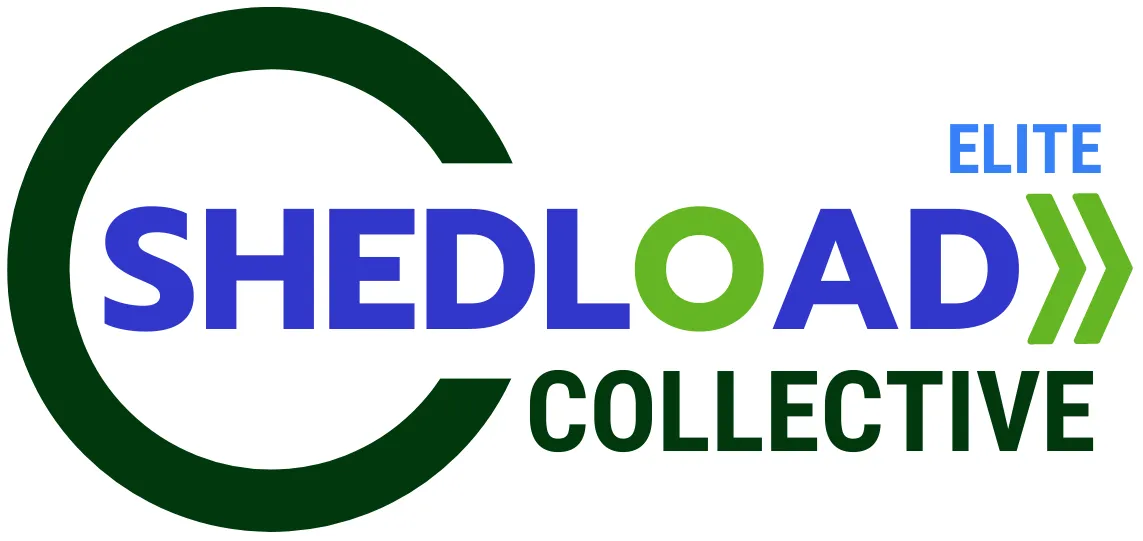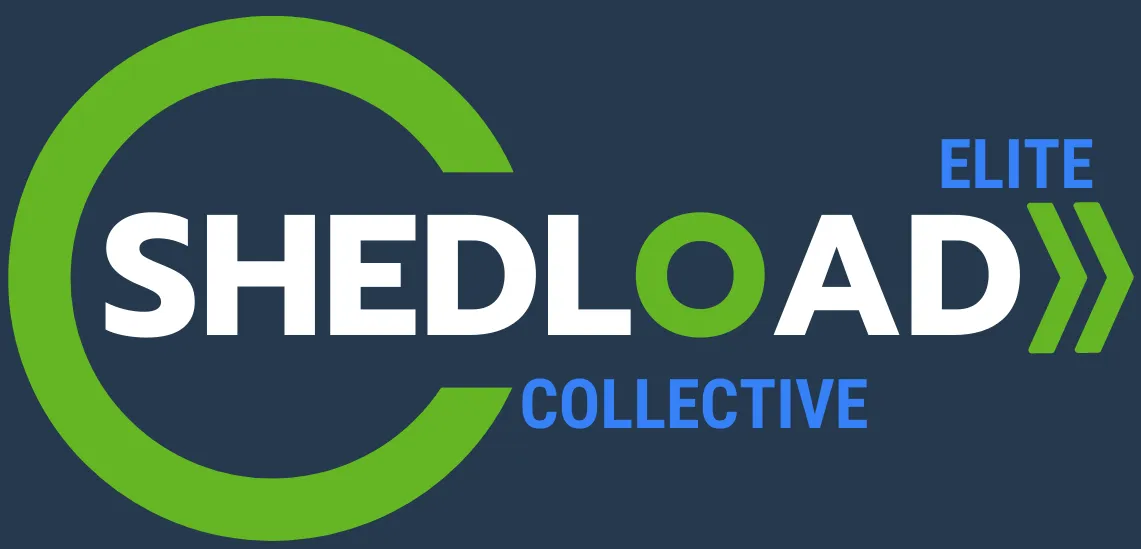
Your Small Business Has A High Likelihood Of Dying Before 2027. What Do You Need To Know – And What Are You Going To Do About It?
In today's economic climate, the convergence of tariffs, rising inflation, and extremely low consumer trust creates a perfect storm that can severely push even healthy economic systems and individual businesses away from sustainable, "High Road Capitalism" (which thrives on Profit Acceleration Principles and Marginal Utility Theory) towards the detrimental "Low Road." This shift is particularly dangerous for small businesses.
How Tariffs, Inflation, and Low Consumer Trust Push Towards Low Road Capitalism
These three elements don't just exist in isolation; they interact to create immense pressure on businesses:
Tariffs: The Cost Escalator & Market Distorter
Direct Cost Increase: Tariffs are essentially taxes on imported goods and raw materials, paid by the importing U.S. company. This immediately increases your Cost of Goods Sold (COGS) and operational expenses (e.g., for imported components, packaging, or machinery).
Supply Chain Disruption & Uncertainty: Tariffs force businesses to re-evaluate supply chains, seek new suppliers, or reshore production, which is often costly and time-consuming, creating instability. Retaliatory tariffs on U.S. exports further harm businesses that sell internationally.
Reduced Competition & Innovation: By protecting domestic industries, tariffs can reduce the incentive for innovation and efficiency among local players, as they face less foreign competition.
The Push to Low Road: When faced with increased import costs, businesses are squeezed.6 To maintain even thin margins, they are forced to either:
Pass on costs to consumers (risking sales).
Absorb costs (eroding profit).
Seek out cheaper, lower-quality domestic or untariffed alternatives, often compromising on quality, labor standards, or sustainability – a direct move towards Low Road practices.
Rising Inflation: The Purchasing Power Eroder
Increased Operating Costs: Inflation means everything costs more – raw materials, utilities, rent, and most significantly, labor, as employees demand higher wages to cope with increased cost of living. This squeezes profit margins from multiple directions.9
Reduced Consumer Purchasing Power: As prices rise generally, consumers' money buys less. They become more price-sensitive and cut back on discretionary spending, leading to decreased sales volume, especially for non-essential goods and services.
Uncertainty in Planning: Unpredictable rising costs make long-term financial planning, budgeting, and investment decisions incredibly difficult.
The Push to Low Road: With profit margins shrinking and consumers becoming highly price-sensitive, businesses face immense pressure. To survive, they might be tempted to:
Aggressively cut labor costs (wage suppression, reduced benefits, higher turnover) to offset rising material costs.
Reduce product/service features or quality to maintain a lower price point consumers might still afford, effectively "shrinkflation" or decontenting.
Prioritize transactional sales over relationship-building, as every sale counts for immediate cash flow.
Low Consumer Trust: The Foundation Cracker
Increased Price Sensitivity: When trust is low (e.g., due to economic instability, perceived corporate greed, past poor experiences), consumers are more cautious. They are less willing to pay premium prices, more likely to scrutinize value, and quicker to switch brands. They prioritize basic functional utility over perceived brand value.
Reduced Brand Loyalty: Lack of trust erodes brand loyalty.14 Customers are less forgiving of mistakes and less likely to advocate for businesses they don't implicitly trust.
Slower Spending: Uncertainty about the future, coupled with a lack of trust in the market, causes consumers to hold onto their capital, leading to an overall slowdown in spending.
The Push to Low Road: In an environment of low trust, businesses find it harder to justify premium pricing or differentiated value. This compels them to:
Compete aggressively on price alone, as that's the only clear differentiator left when trust in quality or brand promise is absent.
Engage in short-term, aggressive sales tactics to capture immediate revenue, rather than investing in relationship-building that takes time and trust.
Potentially compromise on ethical practices or transparency if they believe consumers won't trust them anyway, reinforcing the cycle of distrust.
Why This is Dangerous for Small Businesses
This convergence is particularly lethal for small businesses because they lack the buffers that larger corporations often have:
Limited Financial Reserves: Small businesses typically operate on thinner margins and have less cash reserves to absorb increased costs from tariffs and inflation.15
Less Supply Chain Leverage: They have less bargaining power with suppliers to negotiate lower prices or absorb tariff costs. They also have fewer resources to quickly pivot to entirely new supply chains.
Greater Price Sensitivity: Small businesses often have less brand recognition or market differentiation, making their customers more sensitive to price increases. They find it harder to pass on costs without losing significant market share.
Vulnerability to Reputation Damage: A single negative review or perception of compromised quality due to cost-cutting can have a disproportionately large impact on a small business's reputation and customer base.
Talent Scarcity: They struggle to attract and retain talent in a "Low Road" environment where larger companies might still offer slightly better incentives or stability.
Limited Access to Capital: Rising interest rates due to inflation make borrowing more expensive, hindering their ability to invest in necessary adaptations or growth initiatives.
Innovation Constraint: Without excess capital, investing in innovation to create new value is challenging, leaving them vulnerable to more agile competitors.
In essence, these forces squeeze small businesses from all sides, making "High Road" investments (quality, talent, long-term relationships) seem unaffordable, thus pushing them down the "Low Road" out of perceived necessity, a path that ultimately leads to their demise.
Protecting Your Business: Embracing Profit Acceleration & Marginal Utility Theory as the "High Road" Defense
To protect your small business, you must deliberately choose and double down on "High Road" strategies, leveraging Profit Acceleration Principles and Marginal Utility Theory. This is about creating resilience, fostering deep customer loyalty, and optimizing your operations to thrive even in challenging conditions.
Here's what small businesses can do:
1. Hyper-Focus on Delivering Exceptional, Quantifiable Value (Marginal Utility)
Strategy: Don't just raise prices; justify them with clear, undeniable value. Emphasize the specific, measurable benefits your product/service provides that outweigh its cost.
What to Look For: Customers only buying on price; lack of compelling ROI messaging; inability to articulate unique advantages.
How Profit Acceleration Software™ Helps:
Value Proposition Quantification: The software helps analyze your value proposition and quantify benefits (e.g., "saves X hours," "reduces costs by Y%," "increases revenue by Z%").
Customer-Specific ROI Calculators: Create tools (even simple ones) that show prospects their exact ROI. This transforms perceived price into tangible marginal utility.
Concrete Example (B2B IT Managed Services):
Action: Instead of just increasing monthly fees by 10% due to inflation, the MSP communicates that new pricing includes "Enhanced Proactive Threat Detection (reducing breaches by 90%)" and "24/7 Priority Support (reducing downtime by 50%)." They provide a "Cost of Downtime" calculator.
Benefit: Reduces client churn from price increases by 50% (e.g., only 2% churn vs. projected 4% if prices increased without value). Secures new clients willing to pay higher fees by 15%, increasing Average Revenue Per User (ARPU) by 8%, because the marginal utility of peace of mind and continuity is paramount in uncertain times.
2. Optimize for Profitability, Not Just Revenue (Profit Acceleration)
Strategy: Scrutinize every cost and revenue stream to identify inefficiencies and maximize net profit on every transaction.
What to Look For: Eroding margins despite sales; hidden operational costs; unprofitable product lines or customer segments.
How Profit Acceleration Software™ Helps:
Detailed Profitability Analysis: The software breaks down profit margins by product, service, customer, and channel. It identifies precisely where your highest profits come from.
Cost Optimization & Efficiency Modeling: It highlights areas for internal cost reduction (e.g., supply chain optimization, process automation) that don't compromise quality, improving operational marginal utility.
Concrete Example (Custom Furniture Manufacturer):
Action: Facing 15% raw material inflation from tariffs and supply chain issues, the manufacturer uses the software to identify that custom dining tables have a 25% higher profit margin than chairs, and that streamlining lumber cutting can reduce waste by 7%.
Benefit: Increases focus on selling high-margin tables, boosting related sales by 10%. Reduces material waste by 7%, saving $1,000s monthly. Overall, protects net profit margin from eroding further, stabilizing it at +0.5% despite rising costs, allowing them to remain competitive without resorting to cheap materials.
3. Deepen Customer Relationships & Loyalty (Beyond Price)
Strategy: Build emotional connections, provide exceptional service, and create community to foster loyalty that transcends price competition.
What to Look For: Transactional customer interactions; low repeat purchase rates; lack of customer advocacy; reliance on discounts to drive sales.
How Profit Acceleration Software™ Helps:
CLTV & Churn Prediction: Identifies at-risk customers and quantifies the financial impact of retention efforts.
Engagement Tracking: Monitors customer interactions (support, feedback, loyalty program participation) to ensure consistently high marginal utility delivery.
Concrete Example (Local Bakery & Café):
Action: Facing ingredient inflation and cautious consumers, the bakery focuses on highly personalized service. They launch a simple loyalty program (e.g., "buy 9 coffees, get 10th free," tracked by a simple app) and proactively engage on social media, featuring loyal customers.
Benefit: Reduces customer churn by 3%. Increases average purchase frequency by 5% for loyal customers. Generates 10% more word-of-mouth referrals. This leads to $1,500 additional monthly revenue from repeat business, making them resilient to competitive price wars by fostering unshakeable loyalty.
4. Diversify & Optimize Your Supply Chain
Strategy: Reduce reliance on single suppliers or tariff-heavy regions. Explore domestic sourcing, nearshoring, or multiple international sources.
What to Look For: Over-reliance on one supplier; lack of alternative sourcing options; significant increases in input costs due to tariffs/supply chain disruptions.
How Profit Acceleration Software™ Helps:
Supply Chain Risk Assessment: The software helps map your supply chain vulnerabilities and quantify the financial impact of potential disruptions or tariff hikes.
Alternative Sourcing ROI: Models the cost-benefit of diversifying suppliers or reshoring production, even if the initial unit cost is slightly higher (e.g., stability provides immense marginal utility).
Concrete Example (Small Boutique Clothing Brand):
Action: Heavily reliant on imported fabrics from a tariffed country. They use the software to model sourcing 30% of their fabric from a non-tariffed country, even at a slightly higher base cost.
Benefit: Reduces exposure to tariff hikes by 30%. Stabilizes production costs, improving forecasting accuracy by 10%. Reduces supply chain delays by 15%, preventing lost sales and enabling consistent inventory. This shields them from future tariff shocks.
5. Build a Strong Financial Buffer & Manage Cash Flow Rigorously
Strategy: Maintain adequate cash reserves and optimize cash flow cycles to absorb unexpected cost increases or revenue dips.
What to Look For: Limited cash reserves (e.g., less than 3-6 months operating expenses); long accounts receivable cycles; inefficient budgeting.
How Profit Acceleration Software™ Helps:
Cash Flow Forecasting: Provides dynamic, real-time cash flow projections, identifying potential shortfalls before they become critical.
Scenario Planning: Allows you to stress-test your financials against various "what-if" scenarios (e.g., a 10% drop in sales, a 5% increase in COGS), preparing you for adverse conditions.
Profit Acceleration Optimization: Optimizes areas like invoice management, payment terms, and inventory turnover to improve cash conversion cycle.
Concrete Example (Independent Plumbing Contractor):
Action: Implements stricter invoice follow-up and offers a small 2% discount for payment within 5 days. Uses the software to track monthly cash flow projections rigorously.
Benefit: Reduces average Accounts Receivable (AR) days by 7 days, improving cash flow by $5,000 monthly. Builds a 3-month operating expense reserve within 12 months, increasing financial resilience by 100% against economic shocks and allowing them to invest in strategic growth even when others are struggling.
By intentionally doubling down on these Profit Acceleration Principles and leveraging the insights from Marginal Utility Theory, small businesses can not only survive but truly thrive amidst the challenges of tariffs, inflation, and low consumer trust. It's about shifting from a reactive, cost-cutting mentality to a proactive, value-driven strategy that builds long-term resilience and profitability.
Need help putting this into action? Find us anytime. We’re happy to help.
Do you want to try a Simulator Version of our Profit Acceleration Software? Take it for a free Test Spin and see where you’re losing money.
Or, simply access our Free Training with no forms to fill out!
Are you interested in learning more about our different coaching offerings? Feel free to contact us anytime and check out our wide range of services to support whatever short or long term needs you’re currently facing. By leveraging the Profit Acceleration Software™ (PAS), The Elite Shedload Collective offers a unique advantage. We don't just provide qualitative Coaching and support; we bring data-driven precision with quantitative financial proof to every aspect of your business, ensuring that your efforts to solve these problems translate directly into measurable financial gains and sustained growth.



